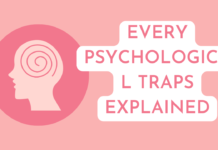Explain the various kinds of the State. (ii) Explain the relation between Law and State.
Ans. Various Kinds of State —States are of the following three kinds—
I. Monarchy—As a matter of fact, it is a system of Government in which the power is central in the hands of a single individual and continues with him thorough out life. It may be hereditary and through election as well. But a monarchy where even elections take place, the king is a ‘ nominal head as in Britain which we can call as limited monarchy.
2. Oligarchy—It is to be noted that it is a system of Government in which the reigns of the Government rests in a small group of nobles. In other words, a small group of people has the control of the State : a small body of men who have the supreme power of a State in their hands. But today we do not find any trace of such a State.
3. Democracy —Democracy is a form of Government “in which the people have a say in who should hold power and how it should be used.” It is also said to be “a form of Government in which the supreme power is vested in the people collectively, and is administered by them or by officers appointed by them.
According to another classification states are of the following kinds
1. Unitary State —It is to be noted that it is a state in which the sovereign power is vested in a central authority, that is Supreme legislative body. Law making function is exercised in such a State by a legislative authority. All powers are vested in it. But it must be kept in mind that under an unitary system of government there may be fully developed autonomous governments, they are not inconsistent with unitary system of ad-ministration. But these governments are not separate state governments. Power of such governments is always subordinate and delegated which can be modified and raised by the supreme legislative body. Great Britain is the best illustration of this form of State.
2. Federal State —It is the product of an agreement between the sovereign and autonomous states. This agreement creates federation. Under.a federal State, there is dual system of governmental administration. A Central government or Central administration extending over the entire territory of the State and other of the federating states within the limits of their defined territory. In other words, the field of government is divided between the federal and the state Governments neither of which subordinate to the other but are coordinate and independent within the sphere alloted to them.
3. Confederation —A Confederation is constituted by a number of independent and sovereign states bound together by an international treaty or compact into a union with organs of government extending over the member states and set up for the purpose of maintaining the external and internal independence of all. The Confederation is not a State at inter-national law, the individual stales maintaining their international position.
(ii) Relation Between Law and State—According to Paton, there are following three main theories about the relationship between the State and the Law-
1. State is Superior to and Creator of Law—According to Starke, state is above law. Hobbes, Bentham and Austin are of the view that state is above law. To Hobbes, Bentham and more particularly Austin State is above and superior to law. Law is the product of the State. Austin defines law as the command of the sovereign. According to Austin every positive law obtaining in any community is a creature of the sovereign or State. If there is no Sovereign or State there is no law. It defines law in terms of State. But when Austin defines Sovereignty and the State, he adopts a practical test. To him there has to be a political society, and a superior in that society who is habitually obeyed by the bulk of the members of that community and who himself is not in habit of obedience to another superior Within this community, the superior has a sovereign power to lay down the law.
2. Law is Above and Superior to State —There arc many jurists who considered law more fundamental than, and as anterior (before in time or place) to, the State that is law proceeds the State and binds it as and when it comes into existence. Laski, Jennings, Duguit, Krabbe are some of the supporters of this theory. Some turn to medieval solution of natural law. Accordingly, the sovereign had the absolute power over positive law but was bound by “jus naturale”. It were the Christian Fathers who ex-tended the authority of law over the king by ascribing to law of divine origin. In the middle ages even a royal judge such as Bracton could “fear-lessly proclaim” that the King was bound by the law. It is to be noted again that in ancient Hindu Law, the law was consid-ered to be “the king of kings”. Hindu jurists proclaimed the theory of the supremacy of law.
It was the law that was sovereign and not the king.
3. Law and State are the Same— Kelsen is the ardent supporter of this theory that law and State are really the same if we look at them from, different angles. According to Kelsen, State is only the legal order if we look at it from different angle. When we think of abstract rules, we think of the law : when we think of the institutions which those rules create, we have state in mind











